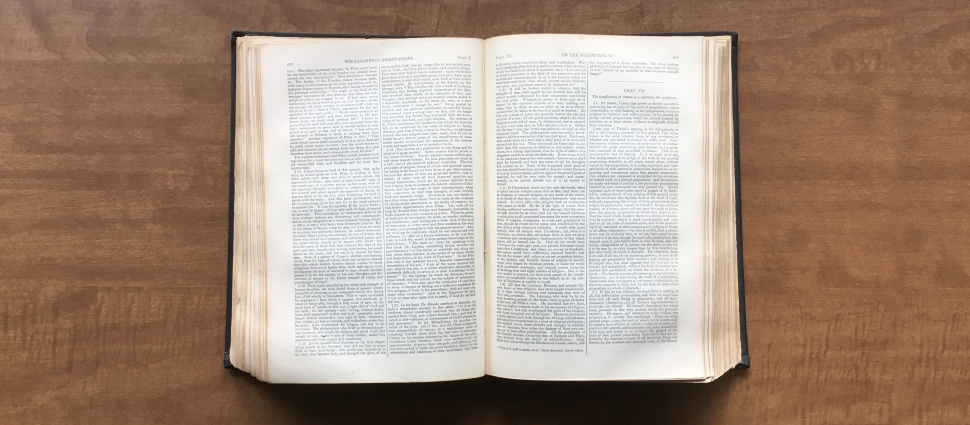Review of Roger Olsen's "Arminian Theology: Myths and Realities"

Given the choice, I would always rather have my opinions presented and explained by a competent opponent than an incompetent friend; but my strong preference is for a competent friend to undertake the task. Thus, it is always very useful to have those views with which we disagree explained to us by those who are competent and sympathetic to the views under discussion. Of such is this book by Roger Olson. While few readers of New Horizons will be in much sympathy with Olson's theology, it is nonetheless useful to have a book on Arminianism written by an Arminian.
Olson's purpose is twofold: to clarify Arminian theology through refutation of ten myths about this theological tradition which Reformed people propagate; and thus to further rapprochement and dialogue between the two traditions. He is basically successful in the first; but I think the very clarity of his presentation will leave readers with a renewed (and helpfully clarified) appreciation of how great the divide is between the two.
The myths Olson refutes are: Arminian theology is the opposite of Calvinist theology; a hybrid of Calvinism and Arminianism is possible; Arminianism is not an orthodox evangelical option; the heart of Arminianism is belief in free will; Arminian theology denies the sovereignty of God; Arminianism is a human-centered theology; Arminianism is not a theology of grace; Arminians do not believe in predestination; Arminian theology denies justification by grace alone through faith alone; all Arminians believe in the governmental theory of atonement.
There is so much to be gleaned from Olson's discussion that I will confine myself simply to a number of points of criticism.
First, a number of Olson's points, while true, really indicate little more than a common basis for Reformed and Arminian theology in the broad terminological categories of Paul as mediated through the medieval and Reformation discussions of Augustine's legacy. Olson is right to point out that Arminians believe in grace and predestination; but this then begs the real question of how those terms are understood within the two theological traditions.
Second, Olson is right to separate classical Arminianism from open theism and also from denial of justification by faith. But the question in both cases is: is this coherent? If God knows the future but agents act freely within that future, we have a problem that goes back as far as Aristotle's treatise On Interpretation and to which both Reformed theology and Open Theism offer responses; I am not convinced that the classical Arminian solution does anything other than combine the apparent difficulties with both approaches into a singularly problematic mix, though Olson is clearly aware of this criticism and it is unlikely to unsettle him. And it is clear from the way in which justification by grace through faith develops in Protestant discussions in the sixteenth and seventeenth century that there is an intimate connection, both theological and historical, between the development of Arminian theology and significant modifications in notions of justification by faith (for example, in the ways in which imputation is reconstrued by Arminius, Piscator and company). Of course, an individual Arminian can hold to a classic Protestant understanding of justification and also to the decisive nature of the human will in faith; but whether the beliefs are really compatible is another matter.
Third, Olson fails to understand a number of key points in the new historiography of theology in the sixteenth and seventeenth centuries. For example, Olson objects strongly to the drawing of connections between Arminianism and Socinianism. Now, it is certainly true that Reformed polemicists have not on the whole been careful and charitable in the way they have hurled the accusation of Socinianism at Arminians; but it is an established fact that there were close theological and personal connections between the two groups from early in the seventeenth century, as the case of Conrad Vorstius, Arminius' abortive successor at Leiden, demonstrates. Modern scholarship confirms this: for example, the work of Oxford historian, John E Platt (not a Reformed scholar, which is significant, given what I have to say in the next paragraph). That the connection has been overplayed in an unpleasant and unfair way by some does not mean that Olson can dismiss the connection in its entirety as easily as he does.
Further, he misunderstands Richard Muller's analysis of Arminius, which is considerably more nuanced than he allows, a strange fault in a book which criticizes others for lack of precisely this virtue. True, as Olson quotes, Muller argues that Arminianism was a `full-scale alternative to Reformed theology,' (45) but Olson's criticism that Muller thus places the two on opposite ends of the theological spectrum is incorrect. First, Muller's work presents an extended critique of the Centraldogma theory of God's sovereignty which Olson seems to impute to him on p. 45; and, second, Muller's work actually demonstrates how Arminius's thought is really a modification of Reformed theology and that the relationship between the two is complex and subtle. The results of this modification are theologically dramatic; and, historically, it cannot be denied that Arminianism became a major challenger to confessional Reformed orthodoxy; but the case Muller makes is far more intricate than Olson's account allows. Then, there is the strange implication that Muller's characterization of Arminius as a `modified Thomist' is designed to distance him from the Reformed tradition. This claim is unfortunate: the scholarly consensus on theology, Reformed and Arminian, in the seventeenth century, is that it all involved various forms of modified Thomism, a point recently made, for example, about the theology of John Owen. Olson also expresses doubt about Arminius' use of Molinist notions of middle knowledge (195-96), but does not seem to be aware of the magisterial work of Dutch scholar Eef Dekker (a sympathetic commentator on Arminius' theology!) on the subject which would seem to me to close discussion of the subject in the affirmative. Indeed, Olson seems at time to read the scholarly historiography through the lens of polemic and conspiracy theory and this is not really helpful. One final point: Muller is described as a `Reformed' scholar: Muller's confessional commitments are no doubt significant for him as an individual, but Olson nowhere demonstrates how these commitments affect his reading of primary historical texts. It would seem to be the kind of argument based on innuendo which the book as a whole is designed to refute; and, as Muller's views are confirmed by such scholars as John Platt, Eef Dekker, and Willem Van Asselt, none of whom would describe themselves as Reformed in the sense intended by Olson, this reference to such is irrelevant and inappropriate.
One final criticism: the heavy didactic tone of the book comes over at times as rather patronizing; but if you can cope with this and are also aware of the serious mistakes in Olson's understanding of the scholarship on seventeenth century thought, this is a useful, if flawed, guide to how a leading contemporary Arminian understands his own tradition.
Dr. Carl Trueman, Academic Dean, Westminster Theological Seminary, Philadelphia, PA




